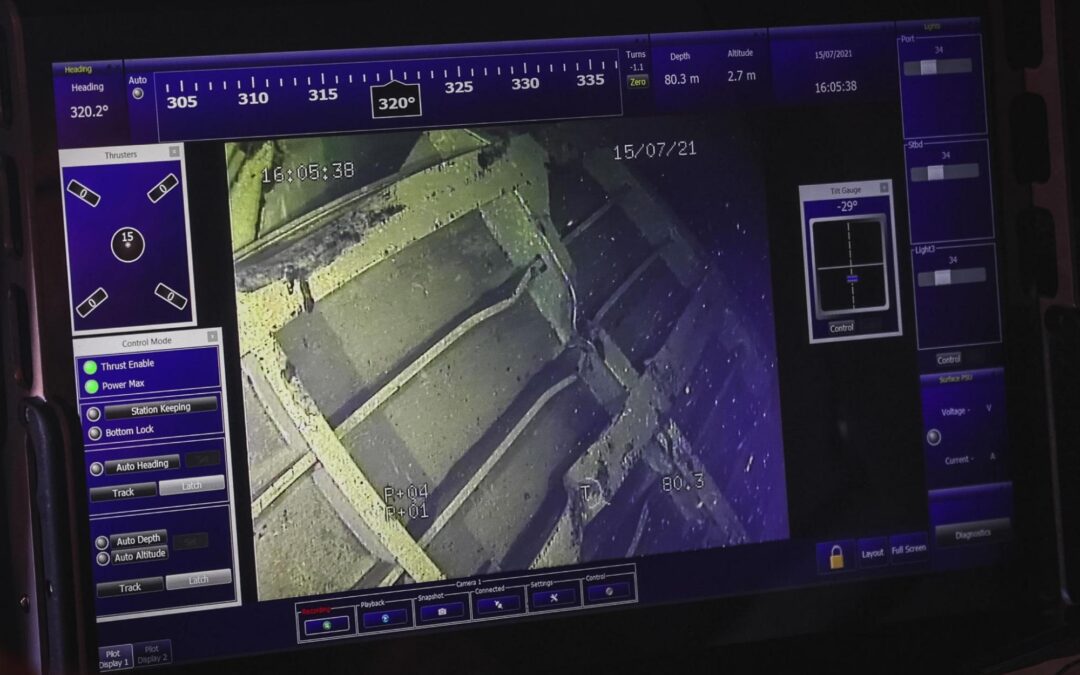The Swedish Accident Investigation Authority has released some preliminary findings after conducting inspections of the Estonia shipwreck. The two holes in the ferry’s hull filmed by documentary filmmakers earlier have been confirmed and documented with scanning zones and a camera.
The ferry Estonia sank on 28 September 1994 during a heavy storm in the Baltic Sea on its way from Tallinn to Stockholm. It was the largest European maritime disaster since the Second World War.
Earlier research conducted a few years after the catastrophe showed that the Estonia probably went down due to problems with the bow visor, although all sorts of alternative theories about the cause continued to circulate. These range from a collision with a submarine to an explosion on board.
Also read: ‘Estonia ferry disaster caused by collision with submarine’
The discussion about the cause of the disaster received a new impulse last year when a documentary with new images of the disaster site was shown. Documentary makers showed images of two large holes in the hull of the sunken ferry. The Swedish Accident Investigation Authority has now confirmed these findings.
Multibeam and side-scan sonar and ROV deployed
Because the the disaster site had a protected status as a mass grave, the Swedish Accident Investigation Authority had to wait for a change in regulations, before it could start new research into the cause of the accident. On the 8 July, the Estonian icebreaker EVA 316 and the Swedish research vessel Electra af Askö travelled to the shipwreck site.

Equipment launched during the investigations (by the Swedish Accident Investigation Authority).
Up to 18 July, several investigations were carried out including multibeam (multibeam sonar) research with equipment mounted on ships driving over the area, side-scan (side vision sonar) research with equipment towed by a ship through the water, and a scanning sonar examination (Mesotech) with equipment that is lowered and placed around the wreck.
About half-way through, an Estonian vessel (VLT 089) joined the work to conduct investigations of the wreck with an ROV (remotely operated underwater vehicle) with cameras. Bottom samples were also taken.
Also read: Divers complete investigation at wreck of ferry Estonia
Preliminary findings
The data collected during the study are extensive and need to be processed and analysed before definite conclusions can be drawn. That work may take in the order of three months. The results will then be published and will also form the basis for decisions on further investigative measures.
However, some preliminary findings were announced by the Swedish Investigation Authority. In addition to the confirmation of the two holes found in the hull, the organisation stated that part of the wreck is in very soft clay, but there are also parts resting between rocks and on a hard bottom.
When examining the vessel with sweeping zones, the results indicated that there is an opening in the vessel’s fore. According to the Swedish Investigation Authority, the ROV examination with camera confirmed that the ship’s bow visor is no longer in place, but is detached from its hinge brackets and now lies on its side, leaving an opening into the ship’s car deck.
Picture (top): ROV footage of the Estonia shipwreck (by the Swedish Accident Investigation Authority).

The Estonian icebreaker EVA 316 and the Swedish research vessel Electra af Askö (by the Swedish Accident Investigation Authority).
[newsletter_form title=”Would you like to receive the free newsletter of SWZ|Maritime? Please fill in your e-mail address here:”]








